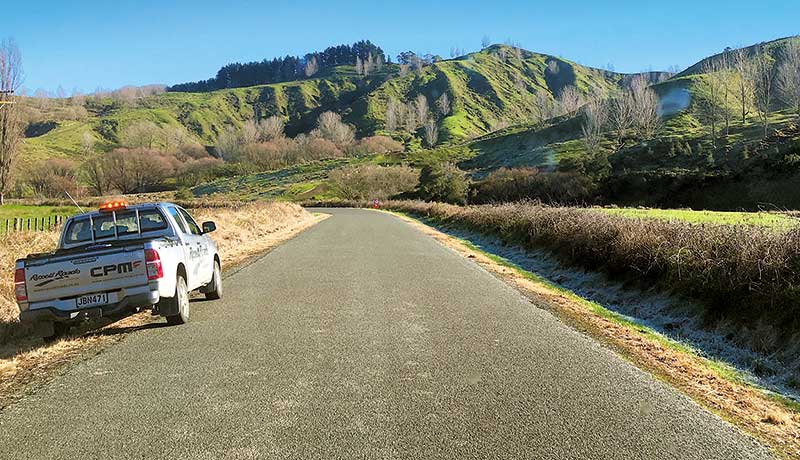Soon after the turn-off, it climbed steeply from the plains and folded farmland onto a high ridge that leads up over Gentle Annie (360 metres).
In a deluge as thunderous as a waterfall, we splashed past prosperous looking homesteads surrounded by sweeping gardens. Smoke curled from their chimneys evoking comfort and cups of tea. This was Hawke’s Bay high country in its winter uniform. The peaked and crevassed hills crash into each other as they march into the distance. Even through the rain this haphazard landscape is bold and spectacular.
The storm we drove through was nothing. In 1988, these hills were some of the worst hit by Cyclone Bola. Some farmers lost 30 percent of their land. To stabilise the slippiest slopes, many were planted with exotic saplings.
At the barely-there village of Tiniroto is a tavern built in 1925, and now sought for its rural character. A sign pointed to Hackfalls Arboretum. The arboretum is home to over 3000 trees and shrubs including varieties of oaks, alders, magnolias and maples. It was planted in the 1950s by the then-owner of Hackfalls Station’s, Bob Berry, who still lives in Gisborne and turned 100 years old two months before we passed through. Now the lakes and trees are looked after by his niece.
We drove on and the hills began to give way to soaring cliffs that threw their crumbs onto the road for us to manoeuvre. The road followed a flooding, malt-brown river affording dramatic views before dropping steeply to meet river flats that were carpeted in emerald green and cross-crossed by fences. Several tributaries flow from the hills to eventually form the massive Wairoa River.
This inland route is so much more interesting than the shorter, seaward version. It ends in the little hamlet of Frasertown where we downed a lager in the pub before travelling the last seven kilometres into Wairoa.
Jill Malcolm is a former editor of Motorhomes Caravans & Destinations and author of the Great Kiwi Motorhome Guide. Read her 'Notes From The Road' in every issue!

Raglan: winter beach life
Mel de Jongh discovers that Raglan is not just a summer destination and offers plenty to spark joy over the winter months






